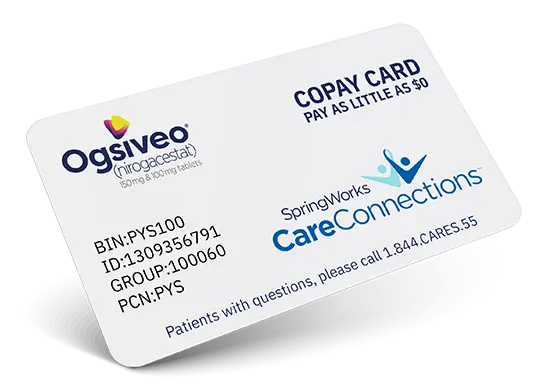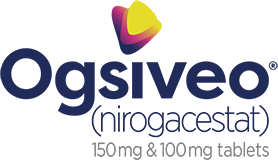SpringWorks CareConnections™ is a free, personalized patient support program to help you navigate your insurance coverage and answer questions about your treatment.
If you have been prescribed OGSIVEO, ask your doctor to help you enroll in the SpringWorks CareConnections Patient Support Program, so you can have access to support, or click here to get started.

Insurance Navigation and Financial Help*
The SpringWorks CareConnections Nurse Advocates can offer information about financial assistance options, as well as information that explains your insurance coverage

Commercially insured patients may pay as little as a $0 copay for each OGSIVEO prescription through the Commercial Copay Program*
Additional support may be available through SpringWorks CareConnections to help you save on OGSIVEO
Call 844-CARES-55 (844-227-3755)
Monday – Friday 8 AM – 10 PM ET for more information
*Terms and conditions apply. Copay program is subject to an annual benefit maximum. Full terms and conditions provided during enrollment process and are available upon request by contacting SpringWorks CareConnections at 844-CARES-55 (844-227-3755).

Personalized Educational and Emotional Support for Patients
The SpringWorks CareConnections team of dedicated Nurse Advocates can provide you with ongoing, personalized support no matter where you are in your treatment journey with OGSIVEO.
If you have started taking OGSIVEO, you can count on support from your Nurse Advocate to help keep you on track with your treatment.†
The SpringWorks CareConnections Patient Support Program is not intended to take the place of your healthcare provider, and the team of Nurse Advocates cannot provide medical or clinical advice.
